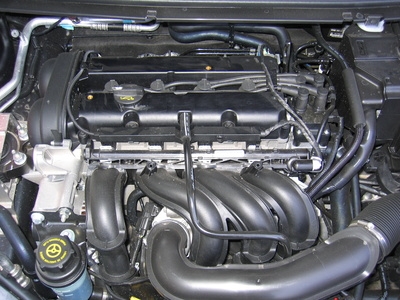
Your car engine is connected to a number of parts and the frame of the vehicle. However, if this framework was just a matter of nuts and bolts, you would feel every jar, bank and bump the car goes over. And your engine would likely break the part of the frame it sits on very quickly. This issue is solved with the use of motor mounts. These parts bridge the connection between the engine and the car frame and are a very important component.
Motor mounts as a vehicle part are essentially a very simple design. In layman's terms, the part basically involves attachment plates made of metal with a rubber block between that acts as a cushion or insulation from physical shock. The rubber piece absorbs the vibration impacts and the metal plates connected to the rubber bolt to the car frame and the engine block. By using this isolation design, the driver and passenger inside the car is not affected by all the jarring and noise and vibration transfer that make take place as the engine does its work. Without the mounts, the engine vibration and movement would making driving extremely uncomfortable.
Motor mounts, due to the abuse they are put through, are not designed to last forever. In fact, the part is very inexpensive in and of itself and is expected to be replaced after 60,000 miles or so. What does raise the cost associated with replacement is the mechanic labor involved, since the engine has to be lifted to remove and replace the motor mounts.
Wear and tear will occur over time in most cases. The deterioration will being with a tear in the rubber part of the motor mount. This will be noticeable as the tear gets bigger and the motor mounts begins to fail. As the engine moves from revving and slowing down, the physical weight-shifting will become obvious to a driver as something in the drive sensation seems to feel lose. Clunking or a heavy-metal clicking is a typical symptom of a motor mount failure occurring.
When the motor mount completely fails, a couple of possible results can occur. The first is that the rubber block separates completely from one or both of the metal plates in the part. The engine will not fall to the ground, but it will now be able to move significantly as the engine revs and drives. This engine block wiggling within the car frame will be very noticeable, with erratic banging and clunking noises and vibration. It will be most noticeable as the demand on the engine increases (torque) or accelerates (speed).
The next failure type is the engine begins to bang against other parts. A common impact will be the engine colliding or banging into the radiator or related parts. In addition, various connecting parts to the engine will get pulled on or will break. This will and can include belts, hoses, intake and outtake manifolds and other related components.
The third symptom will be a very excessive amount of engine vibration augmented when the engine is sped up or increases in torque.
In severe cases, the exhaust manifold can be bent or torn off from the engine block due to a failed motor mount. On front-wheel drive type vehicles, steering will be significant affected. In some extreme cases the engine block itself will swing far enough to damage other moving parts and cause critical vehicle failure while in motion.
As noted earlier, the repair process involves taking out the old motor mounts and replacing them with brand new ones. The engine block must be lifted to take the weight off the old mounts. This can be done by either jacking up the engine block from below (be careful not to damage the oil pan) or by using an engine lift and carrying the weight from above. Most of the repair cost if serviced is associated with manual labor, which can run anywhere from $60 to $100 an hour.